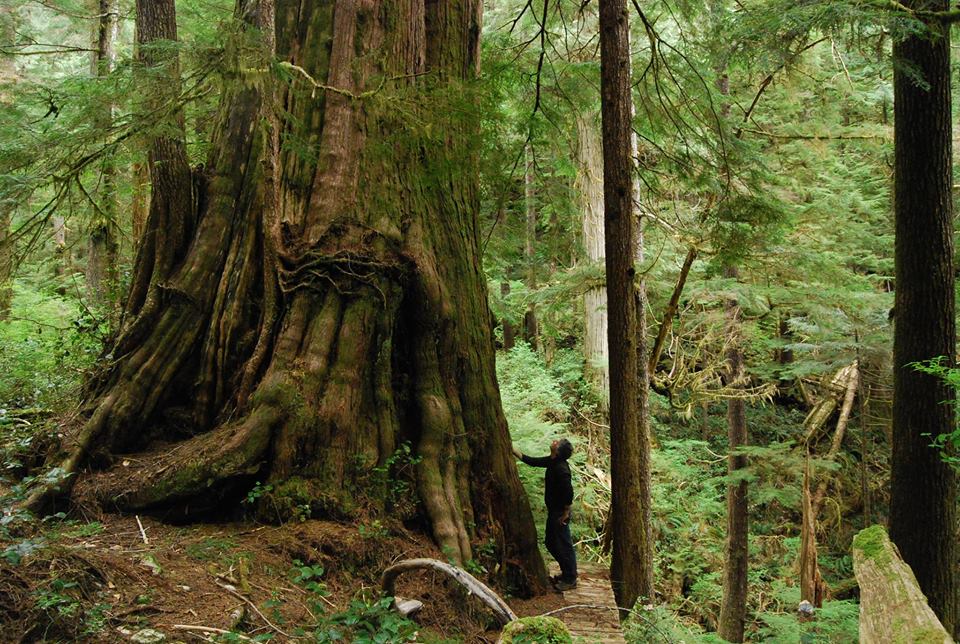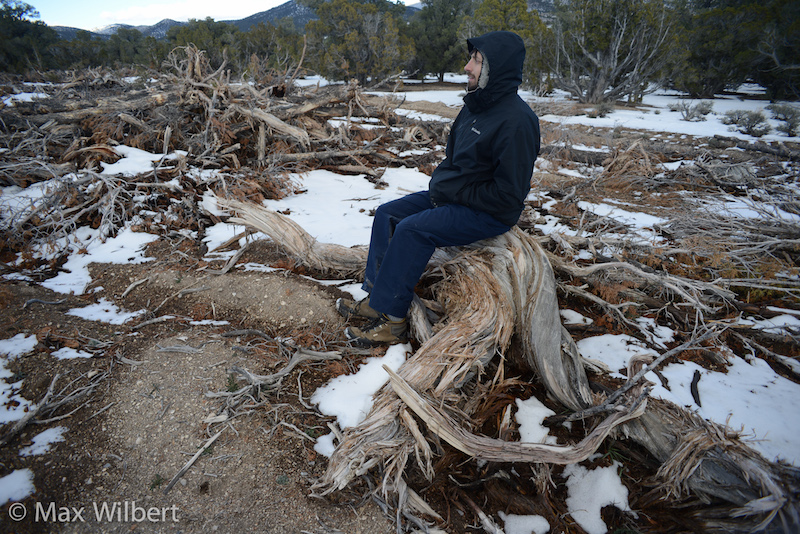
by DGR Colorado Plateau | Dec 13, 2015 | Biodiversity & Habitat Destruction, Listening to the Land, Mining & Drilling
My thoughts race with yesterday. My friend Max Wilbert and I left Park City, Utah in the pre-dawn bitter cold crossing the Wasatch Mountains that form the eastern edge of the Great Basin. The drive west from Salt Lake City on I-80 is disorienting. We began the journey with the radio on. We both became too frustrated by news of another politician refusing to accept refugees, so we turned the radio off to watch the land as we traveled.
Interstate 80 took us past the sites of some of the West’s most destructive extraction industries including Kennecott Copper’s Bingham Canyon Mine. The Oquirrh Mountains stand tall on the Salt Lake Valley’s west side, each peak a majestic testament to the forces of beauty who formed the Great Basin.
Each peak, save one.
With the destruction of the mountain peak and subsequent release of heavy metals, the Bingham Canyon mine is responsible for the deaths of countless migratory birds and their homes
The Bingham Canyon Mine – the continent’s largest open-pit copper mine impacting close to 80 square miles in the Salt Lake Valley – ripped one of the peaks off to disembowel copper from the land. Not far past the pit, stretches the mine’s smelting and tailings pond. The pond, which seems big enough to be called a lake, runs parallel to the Great Salt Lake, one of the Western Hemisphere’s most significant migratory bird habitats. At some places, tailings water sits merely yards from the Great Salt Lake. Mining activities and the tailings pond release selenium, copper, arsenic, lead, zinc, and cadmium into the Lake. With the destruction of the mountain peak and subsequent release of heavy metals, the Bingham Canyon mine is responsible for the deaths of countless migratory birds and their homes including wetlands, marshes, other freshwater wildlife habitats, and freshwater ponds.
After we drove by the casinos in Wendover and the brothels in Ely, we spent the day on the southern slopes of Spruce Mountain walking through a pinyon-juniper forest clear-cut. We met up with biologist and Great Basin expert, Katie Fite, who narrated the history of environmental degradation in the region.
Today, after the travel, seeing the clear-cut, and hearing about the tragic history of the Great Basin, my head is reeling. I crave time and space. I crave simply to locate myself.
The trunk I lean against is the trunk of a tree lost in another clear-cut. I do not want to see clear-cuts anymore, so I face away from the carnage. Behind me are the scattered corpses of pinyon-pine and juniper. Many of these trees were two or three hundred years old and had watched countless of the Great Basin’s arid summers and bitter winters. The pinyon-pines had offered up their delicious nuts to birds like turkeys, Clark’s nutcrackers, Steller’s jays, scrub jays, and pinyon jays as well as wood rats, bears, deer and humans for centuries.
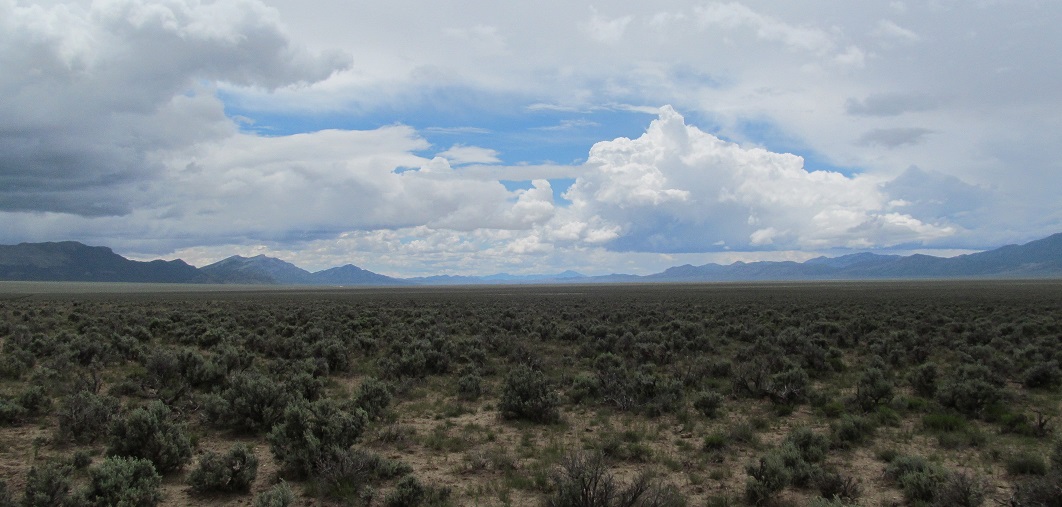
Cave Valley.
With my back turned to the clear-cut, the wide, clear sky, the drama tracing the sharp mountainsides, and the seemingly eternal evenness of the Cave Valley floor creates a vastness that overpowers any inclination I possess towards my own importance.
I am so small here.
I want to pray, but I hesitate because I wonder what relationship I have earned with life here to engage in sincere prayer. I wonder how I must appear to the trees. With my white skin, European genealogy, dark beard, and heavy boots, I must look like so many of the settlers who have damaged this valley before. Have these forests suffered too much trauma to welcome people who look like me? Surely, their most effective survival strategy must be to shut me out.
I want to ask this valley what I can do for life here. I remember that prayer need not involve asking for anything. I sink into the twigs and frost on the ground where I sit. I try to seep into the valley letting myself spill across the landscape.
I remember a strange sensation I experienced not long ago driving through Price, Utah – coal country. Driving parallel to a long stretch of train tracks, through dynamited rock formations, I thought of the Irish – my kin – who must have been involved in building the railroads that lacerate open lands across the West. I asked aloud about what it must have been like for a young Irishman, no older than me, who was asked by his family to leave home and seek work in America because they could no longer feed him. I asked how strange it must have been for him to stand on the docks at Cork wondering if he’d ever embrace his mother again. Then, to pause in the oppressive Utah sun considering the same embrace while digging graves for his friends after a dynamite accident – all in the course of a year.
I feel a sense of ancestral guilt here in Cave Valley knowing that those same railroads opened up Nevada’s remote places to the cattle and sheep grazing destroying the land. Even so, I want to ask this valley what I can do for life here. I remember that prayer need not involve asking for anything. I sink into the twigs and frost on the ground where I sit. I try to seep into the valley letting myself spill across the landscape. I wish the wind would carry me through the sage brush and up the slopes into the living pinyon-juniper forests. The wind stirs. Wind is an invisible being only coming close to being seen when it dries my eyes out, or dances with the trees.
The contrast of the wind’s chill and the sun’s warmth is a sensuous experience of the purest kind. I grow bold. I ask the valley what it wants me to know.
I ask the valley what it wants me to know. As the question forms in my consciousness, the blue wings of a pinyon jay catch my attention.
As the question forms in my consciousness, the blue wings of a pinyon jay catch my attention. The jay is flying swiftly through the clear-cut. She seems aware of her vulnerability with no cover in the void. She lands on a stump, searches around, and pulls up a pinyon pine cone. She shakes it and pecks at it with her beak, but finds no nuts. She pulls another cone up, and again finds no nuts. I watch her fly from stump to stump, felled trunk to felled trunk, and still she finds no nuts. Finally, the voices of my companions returning from their hike carry over the ridge line. The pinyon jay darts quickly across the open and back into the living forest finding refuge in standing pinyon pines and junipers.
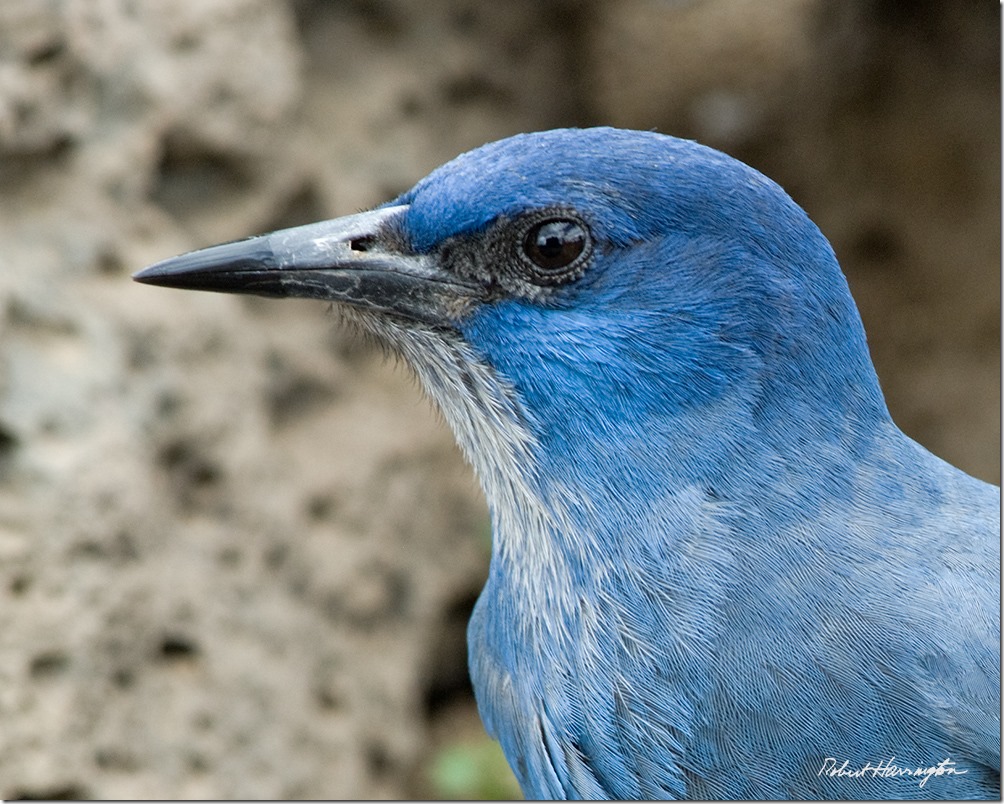
Pinyon Jay. Image by Robert Harrington.
I was asked by my friends to write about pinyon-juniper forests because they are being clear-cut by the Bureau of Land Management, but before I wrote about them, I knew I needed to visit the forests in an effort to understand what needs to be said. Of course, my prayer was answered. Life speaks in patterns. When a story-teller sits down to communicate her experiences in a manner that will make sense to her listeners, she may recognize those patterns and hear life speaking there.
My trip to pinyon-juniper forests in Nevada began with news of the refugee crisis. The journey continued past places where mining destroys the homes of migratory birds, fish, and so many others who depend on the precious-little freshwater near the Great Salt Lake. From there, I witnessed the ruins of pinyon-juniper forests. Not only are these forests populated with ancient, hardy trees who generously offer their pine nuts and juniper berries, but the forests are home to an estimated 450 species of vascular plants and over 150 vertebrate species. Birds live there. Wood rats live there. Deer live there. Elk live there. The Shoshones, the Goshutes, the Paiutes, all live there. All these non-humans and humans are made into refugees by the clear-cutting of pinyon-juniper forests just like the lone pinyon jay I was shown when I asked what I needed to know.
When we peer into the past with Earth’s memories, we see thousands of years of refugees. … Countless species call the world’s forests home, so when we witness deforestation, we are witnessing a refugee crisis.
The recent news on the refugee crisis encourages us to think only of boats filled with human refugees sinking on the way to Europe. These events are most tragic and the refugee crisis is by no means new nor is it limited to humans.
When we peer into the past with Earth’s memories, we see thousands of years of refugees. We see 80% of the world’s forest cover lost to deforestation. We see countless animals fleeing the thunk of axes as blades sink into the living flesh of trees. We see birds circling their young in nests built in quivering branches as we hear the hungry buzz of saws and the sickening crack and snap as trunks break. Countless species call the world’s forests home, so when we witness deforestation, we are witnessing a refugee crisis.
We see more than 75% of the topsoil that existed worldwide when Europeans first colonized North America is now gone. We watch as the plows rip through the skin of the land and the world’s forests to make way for the cultivation of annual crops. Subsistence farming is responsible for 46% of world deforestation, while commercial agriculture is responsible for 32%. Another way to say this is countless species have their homes destroyed so that one species – typically a grain – have a place to thrive.
Ripping metals from the earth creates refugees out of those who call the ground and dark subterranean regions home.
We see 60% of the world’s major rivers fragmented by dams and diversions (PDF). Some of the world’s greatest rivers such as the Nile, the Indus, and the Colorado no longer flow to the sea. For aquatic life, a dam is often an impenetrable wall. We see salmon wanting to return to their spawning beds, wanting to return home, so badly they batter their heads against concrete walls. They struggle so fiercely against the dams river water turns crimson with salmon blood. Dams isolate communities and keep non-humans from coming home as surely as the Berlin Wall of the Cold War separated Germans or the border fences in California, Arizona, and Texas alienate Americans, Mexicans, and indigenous peoples from each other.
While Earth remembers a refugee crisis thousands of years old, the Great Basin’s memories are full of relative peace characterized by humans like the Shoshone, Goshutes, and Paiutes among others living sustainably taking only as much as the land freely gave. It was the discovery of a great silver lode in Comstock, Nevada in the 1850s that brought European settlers en masse and started the refugee crisis in the Great Basin.
Ripping metals from the earth creates refugees out of those who call the ground and dark, subterranean regions home. Additionally, silver is extremely difficult to smelt requiring huge amounts of charcoal produced from burning huge amounts of local pinyon pines and junipers at high enough temperatures to separate silver from the stones it clings to so desperately.
Pinyon-juniper deforestation sends 150 vertebrate species fleeing from their cut homes while 450 plant species have no legs to run with.
I used Ronald Lanner’s statistic in my first essay on pinyon-juniper forests, “An Ancient Vision Disturbed,” but the quantity of trees destroyed for silver mining in Nevada is so staggering the statistic needs repeating. Lanner explains in his brilliant work, The Pinon Pine: A Natural and Cultural History: “A typical yield of pinyon pine was ten cords per acre, and a cord made about 30 bushels of charcoal. So, the furnaces of Eureka, working at capacity, could in a single day devour over 530 cords of pinyon, the produce of over 50 acres. An additional 20 acres a day were being cut to provide cordwood for the mills. After one year of major activity, the hills around Eureka were bare of trees for ten miles in every direction. By 1874, the wasteland extended twenty miles from town, and by 1878 the woodland was nowhere closer than fifty miles from Eureka.”
With the Great Basin experiencing over 50 acres of pinyon pine devoured by silver mining furnaces in Eureka per day, thousands of non-humans were made homeless by silver mining in Nevada each day, too.
Pinyon-juniper deforestation sends 150 vertebrate species fleeing from their cut homes while 450 plant species have no legs to run with. Ancient pinyon pine and juniper trees continue to grow their roots deeper and deeper into endangered ground. They’ve felt their kin cut and cut again. They’ve felt the jays fly away, the rabbits scamper into the brush, and the deer sprint from the axemen.
In the Great Basin, refugees beget refugees. European settlers who physically performed the most destructive job were in many cases refugees from war and economic crisis in their homelands.
European settlement brought populations of humans that the land simply could not support naturally. All those people had to eat. So, cattle grazing was introduced to the semi-arid lands of the Great Basin. It wasn’t long before cattle ate away native grasses and destructive, invasive grasses were imported to support cattle populations. The ranchers became jealous of pinyon-juniper forests and a new motivation for deforestation led to more of the forests being cleared.
In the Great Basin, refugees beget refugees. European settlers who physically performed the most destructive job were in many cases refugees from war and economic crisis in their homelands. My ancestors, the Irish, endured centuries of British domination and a wave of Irish fled starvation when the Great Famine struck Ireland a few years before the Great Basin was settled. Many Irish were involved in building railroads and in mining in Nevada. Richer European settlers – the mining bosses and ranch owners – possessed too much capital to be thought of as refugees in the traditional sense, but they demonstrated a certain spiritual disease produced by the belief that humans can safely take more from the land than the land freely gives.
Exploitation of the land initiates a cycle of violence that is pushing the world to near total collapse.
These European refugees forced the Great Basin’s indigenous peoples into becoming refugees in their own homelands. Lanner describes the violence visited up the Shoshone near Austin, Nevada. The mining and urban activities in the area quickly consumed huge tracts of pinyon-juniper forests which served as the Shoshones’ primary winter food source. With their food depleted, the Shoshones were forced to work for wages in the only two industries operating in Nevada: mining and ranching. “The more these food sources were destroyed, the more dependent the Indians became on wages; and the more they engaged in lumbering and ranching for white men, the more they destroyed their food sources. By the time the bubble burst in the 1880s and 1890s when the mining industry collapsed, the pinyon groves were gone, the valley grasslands were fenced for cattle, and much of the old culture was forsaken.”
As these memories should demonstrate, the exploitation of the land is the source of the oldest refugee crisis. Exploitation of the land initiates a cycle of violence that is pushing the world to near total collapse. Some human cultures have literally eaten themselves out of house and home and continue to require new lands to fuel their way of life. As wider and wider swaths of land are destroyed, communities are encountered that refuse to vacate their homes. But, those who exploit the land gain short term advantages over those who refuse to exploit. Those who refuse to exploit are forced from their homes or killed by weapons made possible by the exploitation of the land and their homes are devastated by technologies similarly made by possible by exploitation.
When the exploiters destroy the possibility of relationship in their minds, they destroy their possibility of belonging, spiritually, to the land. They become refugees.
Spiritual refugees flow from and are created by the land’s exploitation. Before the land, human, and non-human others can be exploited, the exploiters must convince themselves they are somehow superior to these others. The possibility of relationship between exploiter and exploited is forsaken.
The exploiters no longer view mountains as powerful beings patiently watching time pass over the land; mountains are viewed as simple piles of dirt. Animals are no longer treated like relatives capable of teaching humans great lessons; animals are treated like unthinking, unfeeling bags of meat. Rivers are no longer recognized as great dancers, twisting, turning, and writhing in their long beds; rivers are viewed as puddles of water to be drained for farming. When the exploiters destroy the possibility of relationship in their minds, they destroy their possibility of belonging, spiritually, to the land. They become refugees.
In living, and in dying, pinyon-juniper forests offer more to life than they took away. They do not exploit, they do not force others to be refugees. They stand, hardy and still, completely confident in their own belonging.
Pinyon pine and juniper trees are intimately familiar with the refugee crisis. Yet, they cannot flee for refuge themselves. They also offer a lesson for solving the refugee crisis. Pinyon-juniper forests, in simply existing, are inherently beneficent. By simply growing, they sequester carbon and aid in slowing climate change. By simply seeking to reproduce, they create food for countless others. When they die, naturally, their wood become homes for birds, rats, and other animals. In living, and in dying, pinyon-juniper forests offer more to life than they took away. They do not exploit, they do not force others to be refugees. They stand, hardy and still, completely confident in their own belonging.
by DGR Colorado Plateau | Dec 12, 2015 | Male Supremacy, Mining & Drilling
By teleSUR
Women from various Guatemalan communities struggling against resource extraction projects often face repression, criminalization, and violence. Mining projects and resource extraction in Guatemala exacerbate the discrimination and violence that women face in all areas of Guatemalan society, Rights Action Director Grahame Russell told teleSUR English Thursday.
“Repression and human rights violations caused by global mining operations in Guatemala have added negative effects on women in general and indigenous women in particular,” Russell told teleSUR English.
Russell’s comments come after human rights defenders slammed Guatemala’s widespread resource extraction on Wednesday for violating human rights, especially the rights of women, who often face attacks, sexual violence, and social and political repression for their work defending land and natural resources.

“Participants in the ‘We are Rights Defenders’ Forum.”
Women from various communities struggling against unwanted resource extraction projects throughout the country gathered in the capital Guatemala City to discuss the repression, criminalization, and violence disproportionately faced by women rights defenders, especially indigenous women, Prensa Latina reported.
Among the representatives were women from the community of La Puya, in central Guatemala, where they are key leaders in the blockade against the construction of a gold mine and central to the movement’s strategy of nonviolent resistance.
ANALYSIS: Facing Violence, Resistance Is Survival for Indigenous Women
The women called attention to the links between violence against women and the development model in Guatemala based on privatization, mining extraction, and exploitation of natural resources.
“When repression is committed by mining company security guards, soldiers, and police, rape and sexualized violence have also been used against women and girls,” said Russell. “When communities suffer health harm due to mining contaminated water sources, women and children suffer the consequences most.”
Forced displacement can also disproportionately impact women, Russell explained, as men sometimes accept low-paying mining jobs in exchange for their land behind the backs of women.
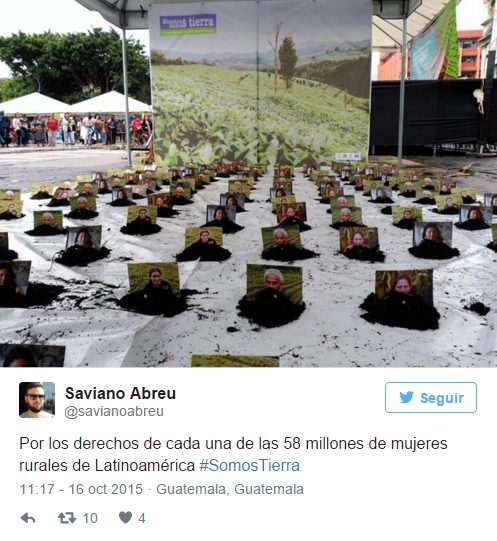
“For the rights of each one of the 58 million rural women in Latin America.”
According to women’s organizations present at the event, a femicide is committed in Guatemala every 10 hours, and one in every 10 women experience some form of gender violence. Guatemala, along with neighboring Central American countries El Salvador and Honduras, are among the worst countries in the world for gender violence and femicide.
Guatemalan activist, feminist artist, and politician Sandra Moran explained that women rights defenders regard women’s bodies, land, nature, history, and memory as all “territories in dispute,” Prensa Latina reported.
ANALYSIS: Femicide in Mesoamerica Persists as Systemic Gender Violence
According to Moran, violence against women “is a mechanism and effect of structural, patriarchal, capitalist system,” and this violence is used by the state to “control resistance, alternative proposals, and to maintain control over the bodies, sexualities, and lives of women,” she told teleSUR English earlier this year.
The activists’ message echoed the findings of a recent report by the Mesoamerican Initiative of Women Humans Rights Defenders, which found that women defending land and territory in the face of mining operations and other projects between 2012 and 2014 were the most vulnerable among all women rights defenders in Central America and Mexico to gender violence, including harassment, abuse, assassination attempts, and other attacks.

“Thirty-two women human rights defenders were murdered between 2012 and 2014. We do not forget them nor will we stop asking for justice.”
“It is extremely difficult to hold mining companies or government authorities, including police and soldiers, accountable — both in Guatemala and in Canada and the U.S. where most companies are based — when they carry out mining-related repression in general, let alone when it has doubly negative impacts on women and girls. Mining companies operating in Guatemala benefit from and contribute directly to the reigning impunity and corruption,” said Russell, referencing the precedent-setting case attempting to hold Canada’s Hudbay Minerals accountable in Canadian court for the rape of 11 indigenous women.
IN DEPTH: Women Resist
The call for more attention to be paid to the plight of women rights defenders comes ahead of the conclusion of the COP21 climate summit in Paris, where organizations and activists have slammed the draft deal for being weak on human rights protection and the recognition of indigenous communities in the context of climate change.
According to Global Witness, Guatemala is one of the 10 most dangerous countries in world for land and environmental defenders.
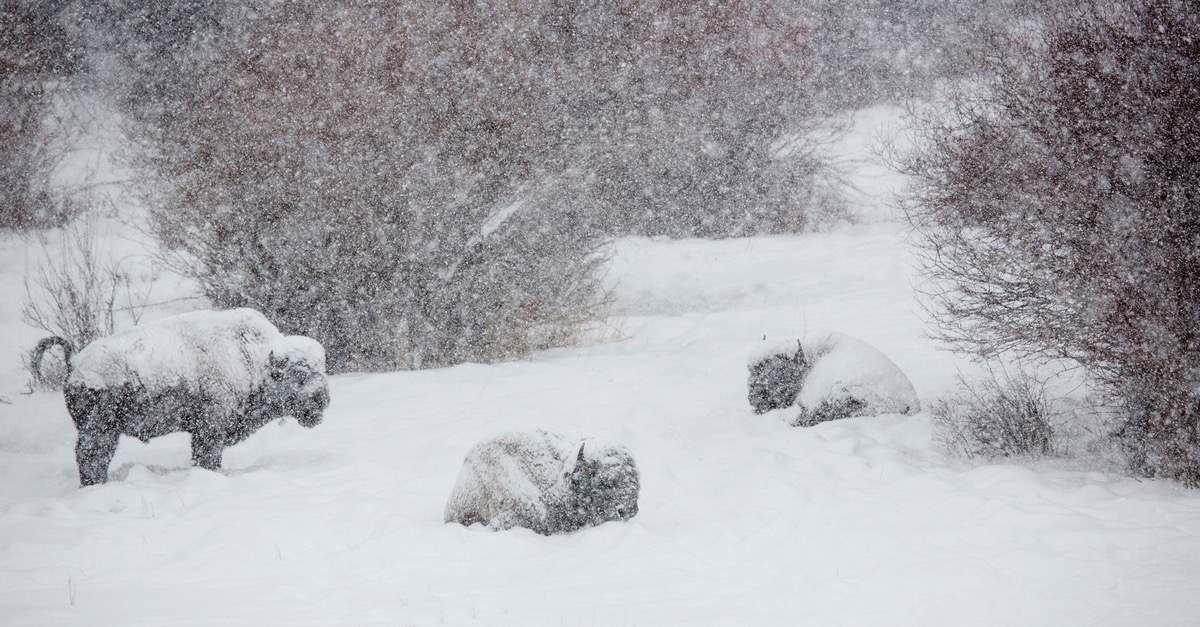
by DGR Colorado Plateau | Dec 4, 2015 | Biodiversity & Habitat Destruction
By Stephany Seay / Buffalo Field Campaign
Buffalo are still absent here in the Hebgen Basin. Patrols are conducting daily recons, searching through the buffalo’s migration corridors, but the gentle giants are keeping themselves out of Montana and, consequently, safe from the killers.
Along Yellowstone’s north boundary, in the Gardiner Basin, buffalo haven’t been so lucky. Another eight buffalo have been killed by Confederated Salish & Kootenai (CSKT) hunters who are “harvesting” ecologically extinct wild bison because they have a treaty right to do so. We would suggest that the CSKT and other tribes who hold treaty rights to the Yellowstone region also have a right to healthy, viable populations of wild bison on all federally unoccupied, unclaimed lands. And we would further suggest that the Interagency Bison Management Plan, which is driving the destruction of America’s last continuously wild buffalo herds, is not only violating the lives of wild buffalo, but violating treaty rights as well.
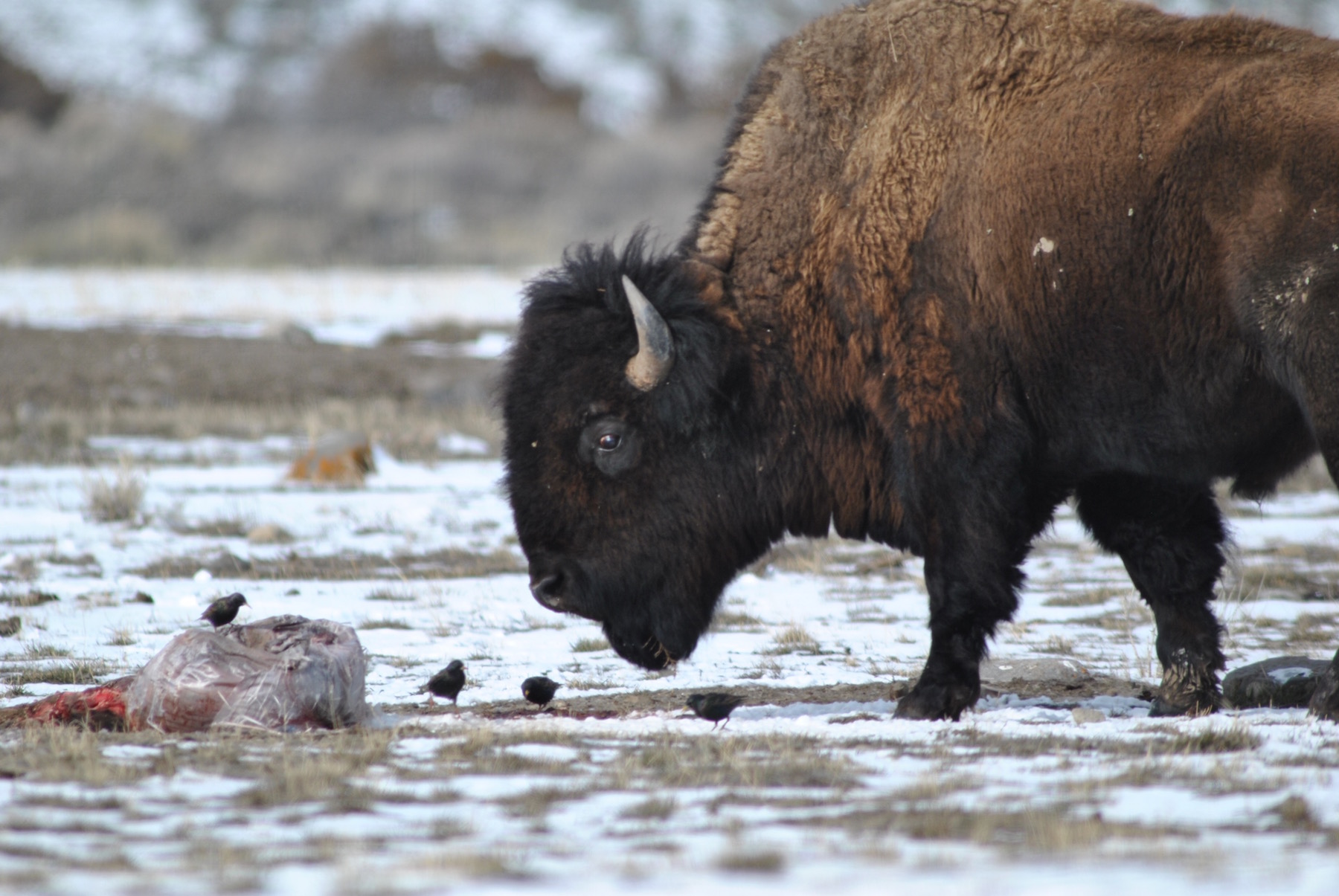
A bull bison approaches a relative’s remains, near Beattie Gulch, in the Gardiner Basin. Buffalo have intense family ties and deeply mourn the loss of those whom they love. Photo by Stephany Seay, Buffalo Field Campaign.
Most of the recent killings in Gardiner took place right outside Yellowstone’s boundary at Beattie Gulch, which is a tight bottle-neck corridor that the buffalo attempt to use to make it to other lower-elevation habitat in the Gardiner Basin. Hunters literally line up and wait for buffalo to cross the line from Yellowstone, where they can then be shot. Hunters and bison “managers” are aware that bison will seek the assumed safety of the Park when groups are shot at in this area. We have frequently seen hunters shoot into large and small groups of buffalo here, and the buffalo’s response has been to turn around and flee into the Park. This, according to Yellowstone, causes hunting to not be “effective” at killing enough, which, in turn, triggers Yellowstone’s response to initiate capture-for-slaughter operations. At the last Interagency Bison Management Plan meeting, some tribes had agreed to occasionally withhold from hunting right at the Park boundary to enable at least some buffalo to migrate to other expanses of habitat. Of course, these buffalo would still be pursued and eventually killed by hunters. The CSKT, who have killed the most through hunting this year and in years past, also hold an agreement with Yellowstone National Park to ship buffalo to slaughter. Since the CSKT also ship buffalo to slaughter, it’s not really in their interest to allow the buffalo to move further into the Gardiner Basin.
BFC’s Gardiner patrols have also reported that hunters from other tribes hunting under treaty, who normally start their seasons later in the winter going into early spring, have been arriving to Gardiner. With Yellowstone threatening slaughter, hunters are anxious to kill as many buffalo as possible before capture for slaughter begins. For the buffalo, it doesn’t matter if they cross the Park boundary or not, as they’ll likely be killed either way.
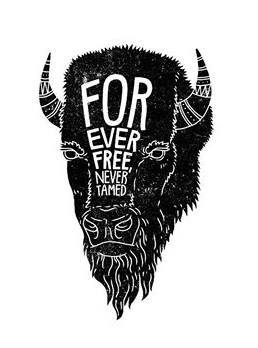
Many thanks to our friend and Gardiner resident, Fred Baker, for sharing this image with us.
The killing of the buffalo, whether it’s through “hunting” or slaughter, is all part of the Interagency Bison Management Plan (IBMP), which was crafted for the benefit of livestock interests, not buffalo. Even those hunting under treaty rights are being used by Montana’s livestock interests, and consequently, the IBMP, to facilitate the destruction of the buffalo and to prevent them from restoring themselves in Montana and elsewhere. Whether the excuse for these fatal tactics is brucellosis or population control, neither are based on reality, they only serve a political agenda. The IBMP exists because Montana livestock interests sued Yellowstone for “allowing” wild bison to migrate into Montana, and because of a law crafted by the livestock industry — MCA 81-2-120 — which places the Montana Department of Livestock in charge of managing wild bison. One industry’s intolerance is driving a national treasure towards the brink of extinction. We know you care deeply about wild bison, and one of the single most important things you can do is to help repeal this law. Contact Governor Steve Bullock today.
Wild is the Way–Roam Free!
–Stephany
Buffalo Field Campaign’s Mission: To protect the natural habitat of wild migratory buffalo and native wildlife, to stop the slaughter and harassment of America’s last wild buffalo as well as to advocate for their lasting protection, and to work with people of all Nations to honor the sacredness of wild buffalo.
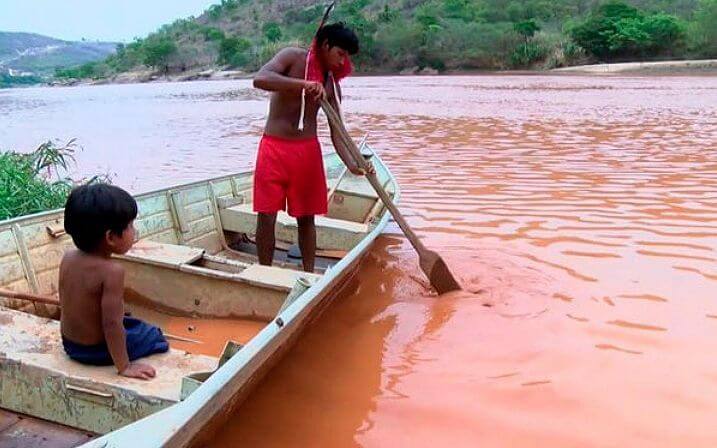
by DGR Colorado Plateau | Dec 3, 2015 | Biodiversity & Habitat Destruction, Indigenous Autonomy
by Marcela Belchior / Adital via Intercontinental Cry
What would initially appear to be the end of the line for the culture and survival of the Krenak indigenous people, impacted by the pollution of the Rio Doce, from the Mariana tragedy, in southeastern Brazil [state of Minas Gerais], could rekindle a 25 year struggle. After being left unable to live without the water of the river, the Krenak population is mobilized around a possible solution for the continuity of the community: to expand the demarcated area of the indigenous territory in the region and to migrate to a new location.
In an interview with Adital, Eduardo Cerqueira, member of the Indigenist Missionary Council (CIMI), Eastern Regional office, which comprises the states of Minas Gerais, Espírito Santo and the extreme south of Bahia, affirms that, as a way to resist the tragedy, the Krenak community [is calling] on the federal government to expand the demarcated area into 12,000 adjacent hectares, embracing the region where the State Park of Sete Salões, one of the Units of Conservation of nature belonging to the Government of Minas Gerais, is currently located.
“We find the strategy interesting, given that the existing area no longer provides conditions for survival. Something must be done”, attests Cerqueira. At present, the demarcated area of Krenak territory covers 4700 hectares. In this zone, extending more than three kilometers along the Doce River have been impacted and rendered unfit for drinking, fishing, bathing and irrigating vegetation in the vicinity, in the municipality of Resplendor, where 126 Krenak families live.
The State Park Parque de Sete Salões was created in 1998, and includes the municipalities of Conselheiro Pena, Itueta and Santa Rita do Itueto, corresponding to one of the largest remnants of Atlantic Forest in eastern Minas Gerais, with mountains, forests and waterfalls. Besides this, the area demanded has potential for indigenous community tourism, receiving visitors and marketing crafts, without damage to the environment.
The territory of the Krenak population, in Minas Gerais, was demarcated in the 1990s, but the entire length of the park was excluded, which today could once again be placed on the agenda. In the early 2000s, the Indigenous people filed a claim with the National Indian Foundation (Funai) and the federal government conducted a technical study on the matter, which to date has not been published. In the opinion of the Krenak, now, the situation is more than appropriate to fulfill the historical demand of the population.
“Various indigenous leaders are concerned about the territorial question. Now, it is a matter of necessity for this concern to be the focus of discussion. (…) This part of the region was not affected by the tailings [pollution],” defends the indigenous advocate. According to the CIMI counselor, since the socioenvironmental tragedy, the indigenous peoples affected have been assisted with emergency support, by means of tank trucks supplying water, transfer of basic food baskets and financial support for the families, which would ensure the community’s survival only in the short term.
“This tragedy was intensified by a period of severe drought. For over a year there has been no rain in the region. Because of this, the tributaries of the Rio Doce are dry. (…) The terrain is not favorable to agriculture. Livestock would be the most common form of indigenous survival, but it is not possible, without water,” explains Cerqueira.
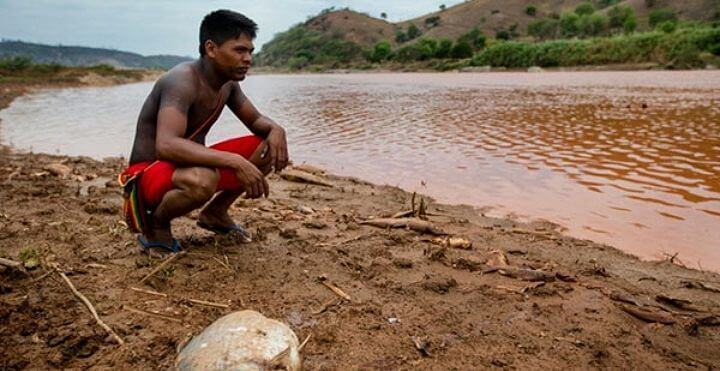
Geovani Krenak laments the death of the Rio Doce: “we are one, people and nature, only one,” he says. Photo: Reproduction.
UNDERSTANDING THE CASE
A torrent of mud composed of mining tailings (residual waste, impurities and [chemical] material used for flushing out minerals) has been flooding the 800 kilometer length of the Rio Doce since November 5, after the rupture of the Fundão dam, of the Samarco mining company. This is controlled by Vale, responsible for innumerable and grave socioenvironmental damages in Brazil, and the multinational Anglo-Australian BHP Billiton, two of the largest mining companies in the world.
In addition to burying an entire district, impacting several others and polluting the Rio Doce, extending through the states of Minas Gerais, Espírito Santo and Bahia, the mud reached the sea over the weekend, even further amplifying the environmental damage, which could take more than two decades before signs of recovery even begin to present. In addition to the destruction of fauna and flora, seven deaths and 17 disappearances have so far been recorded.
KRENAK PEOPLE CLOSE ROAD IN PROTEST
Early last week, representatives of the Krenak indigenous people, whose tribe is situated on the banks of the Rio Doce, interrupted, in protest, the Vitória-Minas Railroad. Without water for more than a week, they said they would leave only when those responsible for the tragedy talk with them. “They destroyed our lives, they razed our culture and ignore us. This we do not accept,” asserted Aiah Krenak to the press.
Considered sacred, in a culture whose cosmological worldview is based on the interconnection between all beings – humans, plants, animals, etc., the river that flows through the tribe was utilized by 350 Indians, for consumption, bathing and cleansing. “With the people, this is not separate from us, the river, trees, the creatures. We are one, people and nature, only one”, says Geovani Krenak.
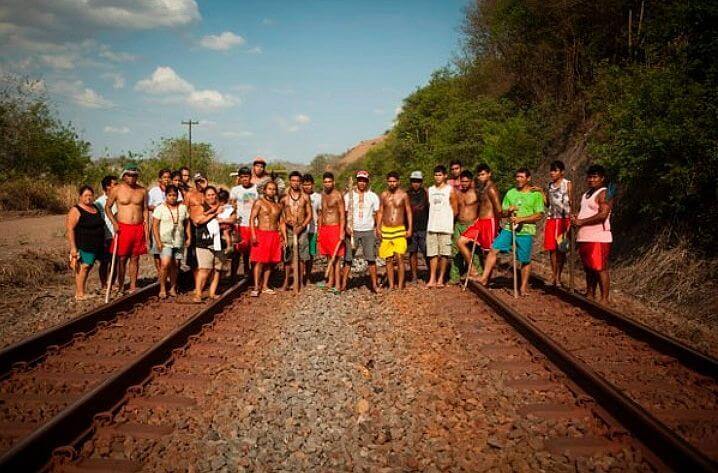
Krenak people protest on the Vitória-Minas Railroad. Photo: Reproduction.
Seated along the tracks, under a 41C. degree sun, Indians chanted music in gratitude to the river, in the Krenak language. “The river is beautiful. Thank you, God, for the river that feeds and bathes us. “The river is beautiful. Thank you, God, for our river, the river of all of us,” the words of shaman Ernani Krenak, 105 years of age, translated for the press.
His sister, Dekanira Krenak, 65 years old, is attentive to the impact of the death of the river affecting not only the indigenous peoples, being a source of resources for many communities. “It is not ‘us alone’, the whites who live on the riverbank are also in great need of this water, they coexist with this water, many fishermen [feed their] family with the fishes,” she points out.
Camped on site in tarpaulin shacks and sleeping mats in the open air, the Indians, now, must also face an unbearable swarm of insects. “It was never like this,” says Geovani Krenak. “These mosquitoes came with the polluted water, with fish that once fed us and that are now descending the river, dead, he reports.
Article originally published in Portuguese at
Adital. Translated to English for Intercontinental Cry by M.A. Kidd. Republished with permission of Intercontinental Cry.
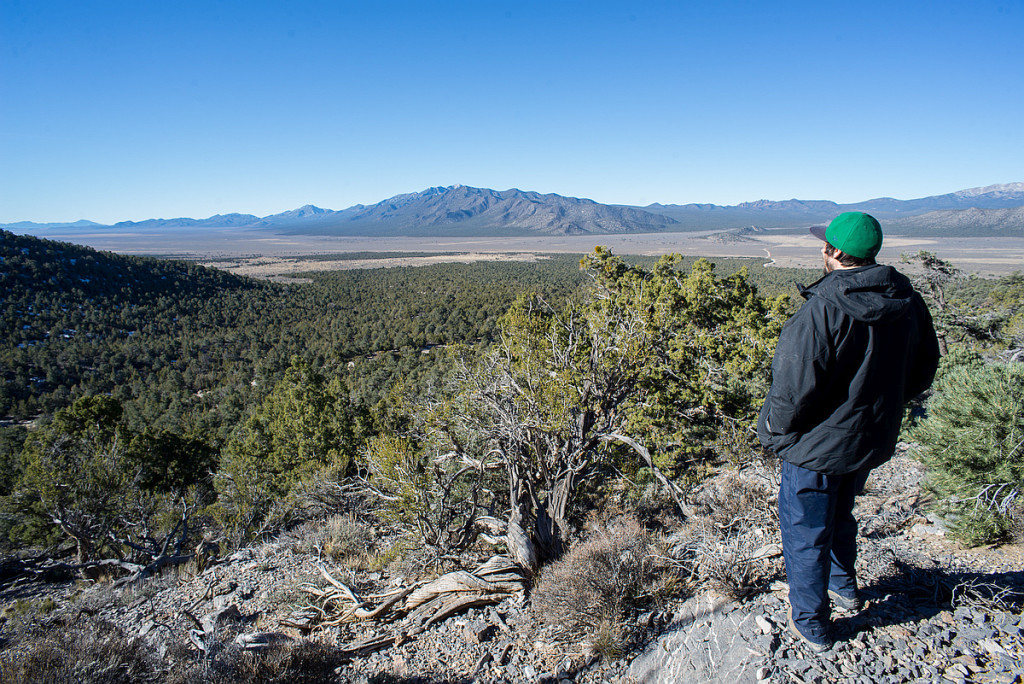
by DGR Colorado Plateau | Dec 1, 2015 | Biodiversity & Habitat Destruction, Listening to the Land, Mining & Drilling
By Will Falk / Deep Green Resistance
Standing in a pinyon-juniper forest on a high slope above Cave Valley not far from Ely, Nevada, I am lost in an ancient vision. It is a vision born under sublime skies stretching above wide, flat valleys bounded by the dramatic mountains of the Great Basin. The vision grows with the rising flames of morning in the east. The night was cold, but clear, and the sun brings a welcome warmth. When the sun crests the mountains, red and orange clouds stream across the sky while shadows pull back from the valley floor to reveal pronghorn antelope dancing through the sage brush. A few ridge lines away, the clatter of talus accompanies the movement of bighorn sheep. The slap and crack of bighorn rams clashing their heads together echoes through the valley.
As the morning passes, the sun shines through pine needles and juniper branches to dapple the forest floor in silvers and golds. The trees offer shade where patches of snow glimmer and whisper with the smallest sounds of melting. Pinyon pine cones are scattered across the ground. As they open, their seeds – delicious, nourishing pine nuts – become visible. Beautiful, blue-feathered pinyon jays gather the nuts in their beak before flying off to cache them for the deepening winter.
Humans have long participated in this vision though the vision is far older than them. From a place deeper than my mind’s memory, in the memories of the borrowed materials forming my body, I feel a kinship to this land’s original peoples. For thousands of years, in this part of the Great Basin, Shoshones and Goshutes have stood looking out at valleys like this one as they gathered the pine nuts that provided the most important winter food source making it possible for humans to live in the Great Basin’s harsh climate.
As I let my memory flow into the past, I see hundreds of generations of Shoshones and Goshutes living well off the gifts the land freely gives. Living in this way, I know their relationship with the land could have lasted forever. Pinyon pines could have gone on offering their pine nuts to jays, rats, and humans. Junipers could have gone on twisting in wooden gymnastics and growing their bundles of blue berries.
A herd of cattle catches my attention and I remember that this is just a vision, after all. The presence of cattle, here, forces me to confront the reality of the Great Basin’s ongoing destruction. An anxiety accompanies the cattle. It is the anxiety that flows from the knowledge of ecological collapse. I envy the hundreds of generations of Shoshones and Goshutes who had no reason to question the eternity of their culture.
Following the slow steps of brown and black cows, I see a metallic glint on the valley floor where streamers are tied onto fences built by ranchers so that sage grouse will not fly into the fences and kill themselves. I have seen the bundles of feathers and blood mangled and stuck in the wire fences. The cattle march to a shallow pond. A thin, but growing ring of algae floats on the pond’s surface while piles of cow shit litter sandy soil stripped of any vegetation. From the pond comes a strangled, gurgling sound. Despite the drought, water is being pumped from already strained wells to support the cattle.
The valley floor is striped in green and yellow patches. The green patches represent healthy, native sage brush and the yellow patches represent invasive crested wheat grass. I have learned how in the 1950s and 60s, the Bureau of Land Management (BLM) initiated a series of projects designed to strip away sage brush to replace it with imported Asian crested wheat grass. Not long after white settlement cattle herds wiped out most of the native grasses in the Great Basin, so now the land must be forced to support them. Destroying the sage brush has had disastrous consequences including contributing to the collapse of sage grouse populations who, as their name suggests, require healthy sage brush for habitat.
Above the valley floors, where the pinyon-juniper forests drape across the mountains’ shoulders, are brown swaths cut into the land where the forests have fallen victim to the BLM’s so-called “vegetation treatment projects.” These vegetation treatment projects are really just clear-cuts justified by the BLM as “providing woodland products to the public,” “maintaining sage brush habitat,” and “protection of property and infrastructure.”
As my experience of this ancient vision disintegrates with the reminders of the processes threatening life in the Great Basin, I remember why I came here. I came, specifically, because I had heard of the BLM’s practice of clear-cutting pinyon-juniper forests. Friends of mine asked me to write about threats to pinyon-juniper forests. I had never seen a clear-cut pinyon-juniper forest before, I knew very little about the Great Basin at all, and I’ve always thought the best way to write about the land is to seek a true relationship with it.
So, my friend, the great activist, writer, and photographer Max Wilbert flew to Salt Lake from Eugene, Oregon and we made plans to drive from my home in Park City, Utah to Nevada to see both living pinyon-juniper forests and clear-cuts. We met up with Katie Fite, a biologist and the Board Secretary for the environmental protection group, WildLands Defense. Katie brings over 30 years of on-the-ground experience to environmental advocacy possessing expertise in the Great Basin’s ecology.
***
I walk through the shades and shadows of a healthy pinyon-juniper forest. Songbirds create their music celebrating the beauty of their home. Social ravens gossip back and forth diving down to ask who I am. From time to time, I catch a grey glimpse of a rabbit bounding out of my path. The gentle hooting of an owl falls from the treetops. Though I am several hundred yards from any of my companions separated by ridge lines and hundreds of trees, I do not feel alone. A sense of deep familiarity, the feeling shared when friends gather, settles over me.
It is the 19th of November. The full cycle of seasons in the Great Basin carries the range of temperature extremes. The summers are dry and hot and the winters are frigid with plenty of snow. Even a single day in the Great Basin reflects these extremes. Last night dropped below freezing and I woke with a crisp layer of frost on my sleeping bag at dawn.
In the cold times like these, the slopes of the mountains are the warmest places to be because as the sun comes up and heats the air on the valley floor, the warm air rises. The slopes of the mountains are also where the pinyon-juniper forests are. By mid-morning, the sun is strong and hot. Even though the temperatures fell into the teens Fahrenheit last night, the temperature gains the 60s by noon. The forests, then, are the most comfortable places to be in both the cold night and the hot day. The forests are warmer at night and in the morning than the valley floors, and when the sun beats down during the day the trees offer soothing shade.
It feels, to me, that these ancient pinyon-juniper forests enjoy caring for humans.
I feel I could walk through the forest like this for miles. Then, the trees abruptly stop. The shade ceases and the sun strikes my eyes with a physical force. A cold wind, driven wild over unbroken space, slaps my face. The sudden openness is a shock. I almost trip. Behind me is a living forest, before me is a void.
I have stepped into a clear-cut.
To my left for a mile, to my right for a mile, and a quarter mile across, the land is brown. The long limbs of pinyon pines slump across the gnarled trunks of junipers. I have only seen pictures of human massacre sites. Bodies, frozen and stiff, heaped in piles. And these clear-cuts are truly tree massacre sites.
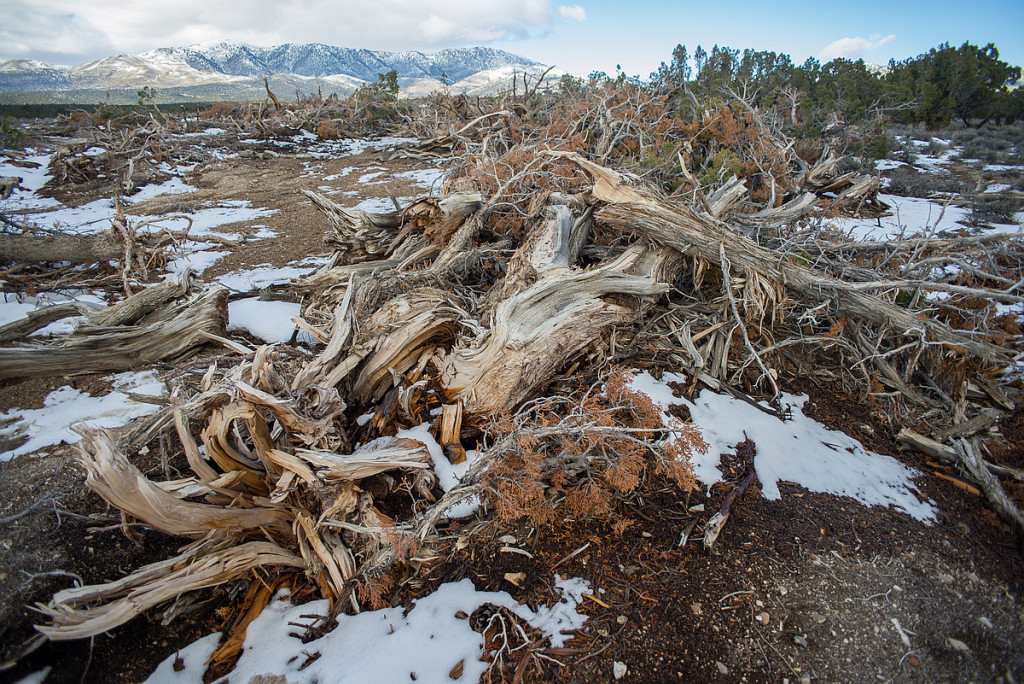
Old -growth Juniper and Piñon-Pine lie in a twisted heap in a chained area south of Spruce Mountain, Nevada. (Photo: © Max Wilbert 2015)
I can tell this particular clear-cut was “chained.” Chaining is a practice employed by the BLM and is done by stretching a U.S. Navy battle-ship anchor chain between two crawler tractors. The tractors are driven parallel to each other, dragging the chain across the forest floor, and uprooting everything in the chain’s path.
The area chosen for chaining has no logic, no reason behind it. The clear-cut follows no straight lines. The path the crawler tractors took follows no pre-conceived geometric plan. No one mapped out where trees would be cut and where they wouldn’t. The cut looks more like the devastating consequence of a petulant child’s temper tantrum than the cold-calculations of forestry professionals.
Moving through the middle of the clear-cut, now, the worst part is the silence. The silence is more than the absence of sound. This is a spiritual silence. The void seeps from the empty space where a forest once stood and flows into my consciousness. Where moments before I was surrounded in the sense of the presence of life, now there is nothing. Nothing, except the rotting corpses of a once thriving forest community.
I want to know how this is possible. I want to know what justifications cleared the way for this destruction. I want to know who is behind this. I want to know why.
***
The history of pinyon-juniper deforestation in the Great Basin as well as a list of justifications and motivations for deforestation is too long, perhaps, for one essay. The truth is, I am still learning. I have spent the last three weeks reading everything I can about pinyon-juniper forests and I wish to sketch a broad storyline. This storyline includes dominance of ranching and mining interests in Nevada, a governmental bureaucracy that consistently drinks the kool-aid prepared by ranchers and miners, the historical amnesia that characterizes settler colonialism, insidious racism, blatant genocide, and what pinyon-juniper expert Ronald Lanner calls “dendrophobia for which there seems to be no treatment.” Because one essay cannot possibly provide the whole story – a story pinyon-juniper forests desperately need to be told – I will broadly describe the major themes in this essay and I plan on writing a series on pinyon-juniper forests exploring specific themes in more detail.
The history of pinyon-juniper deforestation in the Great Basin is a glimpse into the dominant culture’s insanity. There was a truly sustainable way to live in the Great Basin, but the arrival of European settlers doomed that way of life. The Shoshones and Goshutes lived for thousands of years hunting game in the spring and summer and gathering pine-nuts in the fall. This sustainability involved understanding how to manage their populations so the land’s ability to support humans would not be drawn down. Ronald Lanner in his foundational work “The Pinyon Pine: A Natural and Cultural History,” credits pinyon pine-nuts as the essential food source that made it possible for humans to live in the Great Basin. Of course, the Great Basin’s original peoples have always known this, and know that destroying the forests is suicidal.
European settlers arrived in droves looking for precious metals and bringing their “white man’s buffalo” (domesticated cattle). Mines were established and the only reliable source of wood in most of Nevada was pinyon-juniper forests. Lanner explains, “The production of mineral riches would not have been possible in nineteenth century Nevada without the pinyon woodlands and their vast supplies of wood. The opening of a mine was only the first of many operations necessary to convert hard rock into treasure. Huge labor forces had to be brought in to work the mines and to build and operate stamp mills, smelters, amalgamators, and concentrators. Lumber in enormous quantities was needed for these operations: timbers for shoring the mine shafts, charcoal for smelting ore, cordwood for heating and cooking. The great Nevada silver boom ran on wood.”
Lanner goes on to quantify the destruction and the numbers are absolutely devastating. He explains the destruction around Eureka, Nevada in the 1870s: “A typical yield of pinyon pine was ten cords per acre, and a cord made about 30 bushels of charcoal. So the furnaces of Eureka, working at capacity, could in a single day devour over 530 cords of pinyon, the produce of over 50 acres. An additional 20 acres a day were being cut to provide cordwood for the mills. After one year of major activity, the hills around Eureka were bare for ten miles in every direction. By 1874, the wasteland extended twenty miles from town, and by 1878 the woodland was nowhere closer than fifty miles from Eureka.”
As is so often true, the destruction of the land is the destruction of the land’s original peoples. Lanner describes the situation in Nevada for the Shoshone as a “vicious circle” and writes, “The mining and urban activities there required huge amounts of wood and the burgeoning population consumed prodigious amounts of food. Local Indians helped provide both of these commodities by working for wages as lumberjacks and ranch hands. Those who cut down trees were destroying the source of their traditional winter food, pine nuts. Those who punched cattle aided and abetted the eradication of the native grasses that provided their traditional summer fare of grass seed. The more these food sources were destroyed, the more dependent the Indians became on wages; and the more they engaged in lumbering and ranching for white men, the more they destroyed their food sources. By the time the bubble burst in the 1880s and 1890s when the mining industry collapsed, the pinyon groves were gone, the valley grasslands were fenced for cattle, and much of the old culture was forsaken.”
The 1950s ushered in the next era of pinyon-juniper deforestation as ranchers became jealous of the presence of trees on potential grazing lands. Lanner notes that since the earliest white settlements in the Great Basin, accessible tracts of woodland had always been grazed. Lanner sums it up writing that overgrazing and timber trespass “combined to make the woodland one of the worst abused vegetation types in the West: even now the acre of woodland where one can find refuge from the ubiquitous cow pat is a rarity. But, as the post-World War II hunger for red meat mounted, the Forest Service started carving up National Forest woodlands with bulldozers and chains, hoping to create greener pastures.”
The ranchers’ jealousy of trees persists to today though new justifications for deforestation have been developed to thinly disguise the ranchers’ war on forests. A recent public scoping notice published on September 29, 2015 by the BLM, Carson City District, Sierra Front Field Office is illustrative.
It is not within the scope of this essay to address the problems with each of the BLM’s justifications. Many of the justifications require their own, full essay to thoroughly undermine them and I plan on writing those essays. Several of the reasons may be addressed, here, though. The BLM’s notice makes no attempt to hide ranching interests as a primary purpose for the treatments. This is clear as the BLM explains that one purpose of the vegetation treatment project is “to maintain and enhance rangeland health.” The problem with this is the Great Basin is not rangeland. The valley floors are naturally covered in sage brush and the highlands are pinyon-juniper forests. Converting the region into rangeland is only possible through great violence.
The BLM gives another justification for the deforestation with, “A large focus of this project would be to improve and protect greater sage-grouse habitat, and treatments would be designed to address threats to greater sage-grouse from invasive annual grasses, wildfires, and conifer expansion.” Of course, it was the BLM’s own disastrous policy of sage brush clearing that led to the sage grouse collapse in the first place. The BLM goes on to blame invasive annual grasses (most of which were brought to the Great Basin by settler activities), wildfires (exacerbated by human-created climate change, drought, and the planting of imported grasses that burn more quickly than native grasses), and finally to conifer expansion. By conifer expansion, the BLM is referring to pinyon-juniper forests who are simply regrowing in regions where they had been cut down by the mining operations of the 1870s.
***
I hope this essay serves as an introduction to the beauty of the Great Basin’s pinyon-juniper forests, the gifts they have long provided, and the dangers confronting them. It is time the BLM’s pinyon-juniper deforestation projects be stopped. The good news is a coalition of allied activists with Deep Green Resistance and WildLands Defense is in the early stages of planning a campaign to save these beautiful, essential, ancient forests. The first step is recognizing their inherent value as living beings. Stay-tuned for more updates including ways to get involved. Join us and stand on the side of pinyon-juniper forests.
Editor’s Note: The second installment of this multi-part series on pinyon-juniper deforestation can be found here.
Will Falk moved to the West Coast from Milwaukee, WI where he was a public defender. His first passion is poetry and his work is an effort to record the way the land is speaking. He feels the largest and most pressing issue confronting us today is the destruction of natural communities. He is currently living in Utah.
More information on this campaign can be found at Protect Piñon-Juniper Forests.
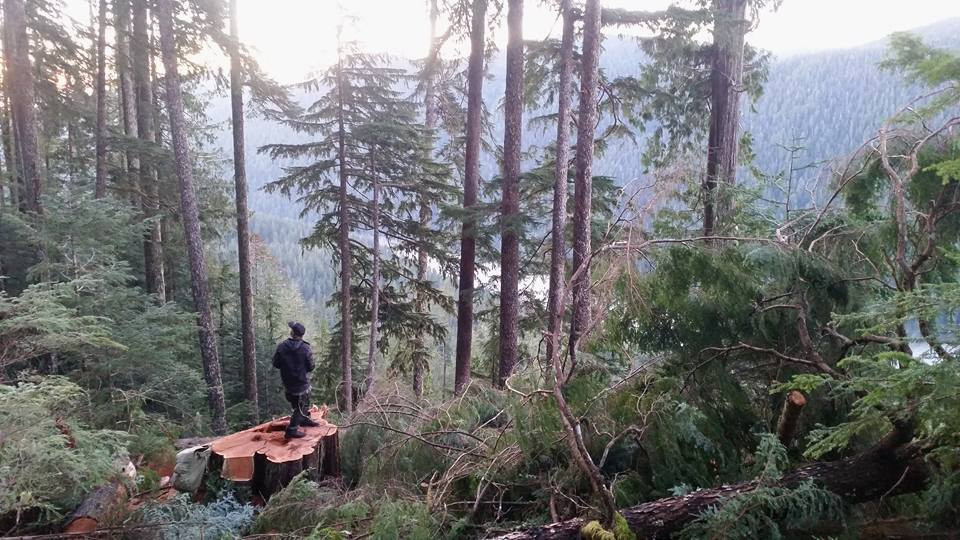
by DGR Colorado Plateau | Nov 28, 2015 | Biodiversity & Habitat Destruction, Lobbying
Editor’s Note: This letter, published at Vancouver Island Community Forest Action Network, is addressed to Canadian timber company Teal Jones Group in regards to the planned logging of Walbran Valley. You can read more about this at Renewed Defense of British Columbia’s Central Walbran Ancient Forest. Featured image of freshly cut cedar tree courtesy of Walbran Central.
By Zoe Blunt / Vancouver Island Community Forest Action Network
To Teal Jones’ executives, contractors, foresters, geologists, staff, and stakeholders:
I’m writing as a director of Vancouver Island Community Forest Action Network in Port Renfrew, BC. As forest watchdogs, we share Teal Jones’ goal of achieving the best environmental stewardship possible. I’m pleased to announce we are doubling down on our commitment to that goal.
There is a growing perception that Teal Jones’ operations in the Walbran Valley – logging an ancient forest that’s part of a beloved recreation area, on public land next to a park – is illegal, or ought to be. The public has a strong interest in ensuring that Teal Jones is not breaking any laws, statutes, or regulations.
In this spirit, we are recruiting volunteers to monitor every inch of area designated for timber harvesting, including proposed clearcuts, special management zones, wildlife habitat, leave trees, slash piles, streams, log dumps, roads, helipads, culverts, and ditches. We will check signage and radio frequencies, and visually inspect logging trucks. We will make sure the stumpage and grade-setting for the area are correct. A team of eager researchers is preparing for these tasks.
Of special concern are the karst features in the area – sensitive limestone formations underground, or in this case, on the surface. This is one of our areas of expertise, and we look forward to seeing the reports from the geologist responsible for signing off on logging those cutblocks. We plan to prepare our own reports and take all appropriate steps to ensure everyone involved is aware of the provisions of the law and fully complies with the requirements of the Forest District’s order for protection of karst.
There’s more. We will continue to follow up and document the area long after the trees are felled, to monitor reforestation, slope stabilization, road decommissioning, landslides, and habitat restoration.
We welcome the opportunity to use every legal means to achieve the goal of environmental sustainability.
We are aware of the history of violence by loggers in BC, including unprovoked attacks on peaceful protesters. We are concerned about potential hotheads on the logging crew, and for that reason we will take steps to keep our volunteers safe and give them the ability to respond appropriately, including documenting any violence or threats.
We note that rather than working with the community to find a way to preserve recreation sites and wildlife habitat, Teal Jones has taken the extreme step of suing people to get them out of the way.
Speaking for Forest Action Network, we have no intention of violating the court order. We employ strictly legal means to achieve our forest stewardship goals. Since the logging is taking place in a place designated as Crown land, we have the right and the responsibility as stakeholders to monitor and bear witness to Teal Jones’ operations.
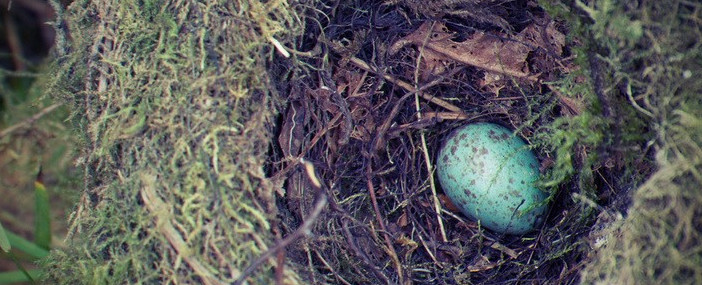
Thrush egg, Walbran Valley. Photo courtesy Ellen Atkin.
As a non-profit society, we don’t counsel anyone to commit illegal action. We don’t condone activities like sabotage, vandalizing equipment, or spiking trees, which is the practice of hammering oversized nails into trees to threaten chainsaws and mill blades. But we remember history: two thousand trees spiked in the Walbran Valley in 1992, for example. That kind of response is not what we advocate, but we recognize the potential is out of our control.
Teal Jones’ reckless pursuit of the ancient Walbran forest has brought us to this conflict in an effort to keep the peace. The company is aggressively logging up to the park boundary, disregarding community input, and failing to obtain social license for its operations in the Central Walbran. They are operating in a rapidly changing climate, using discredited practices from the last century. They have lost sight of the goal shared by millions around the world: preserving this dwindling, irreplaceable ecosystem. We will do everything in our power to sustain these living communities.
We’re looking forward to seeing you soon.
Sincerely,
Zoe Blunt
Vancouver Island Community Forest Action Network
#Walbran
Read Teal Jones’ lawsuit against environmentalists.
Read Teal Jones notice of application for an injunction.
Background info here.
















